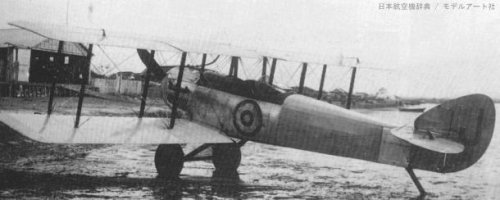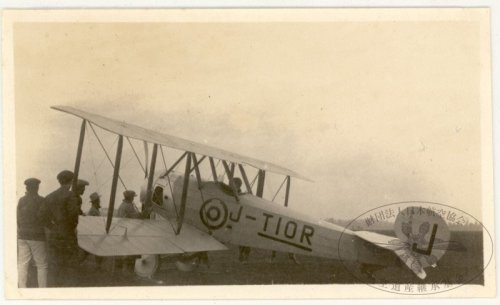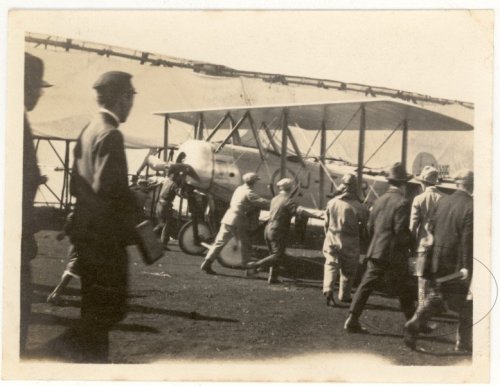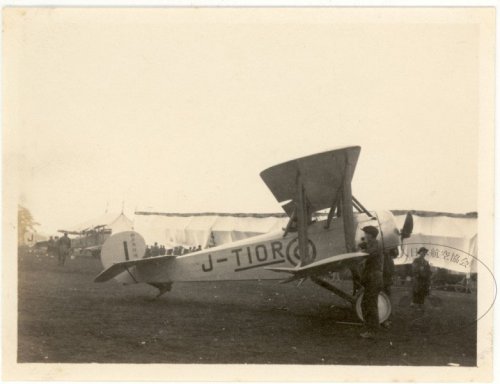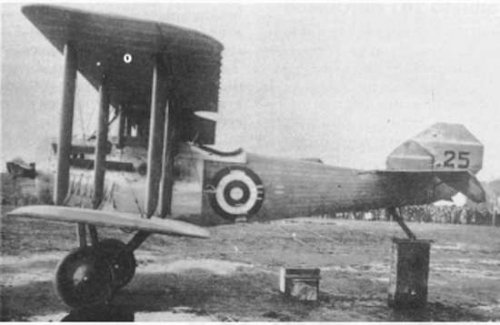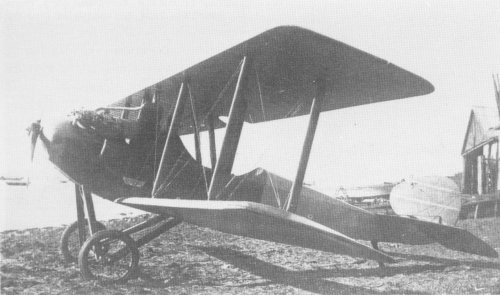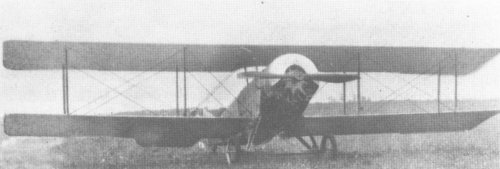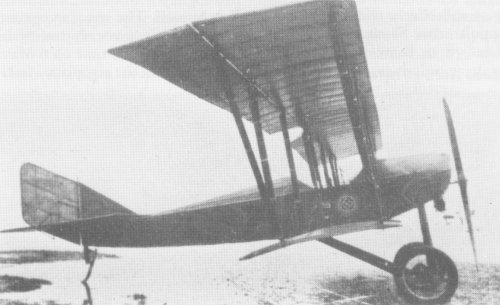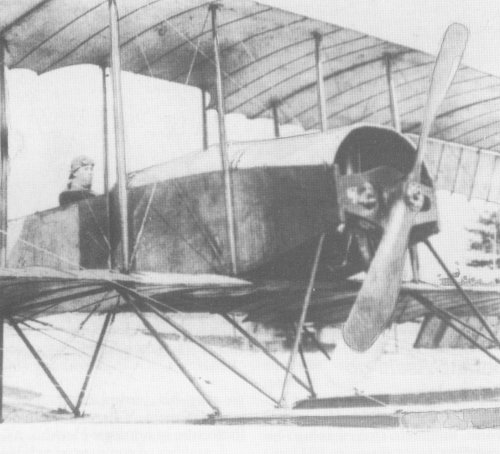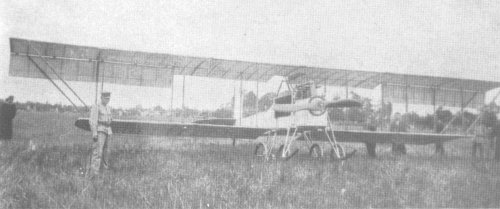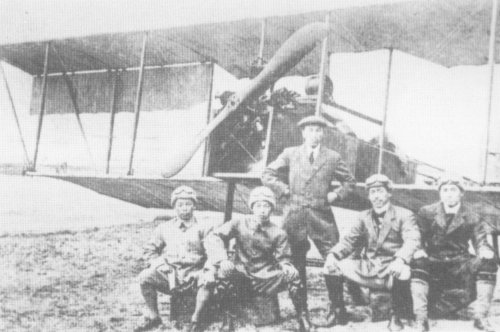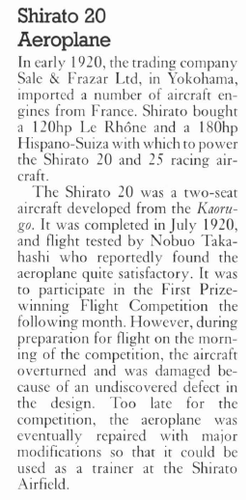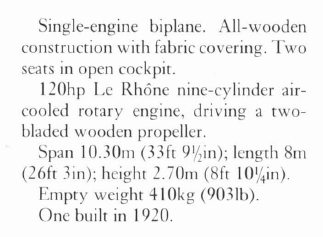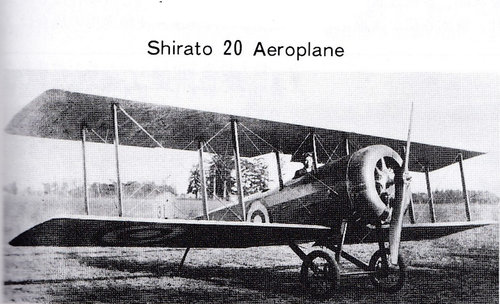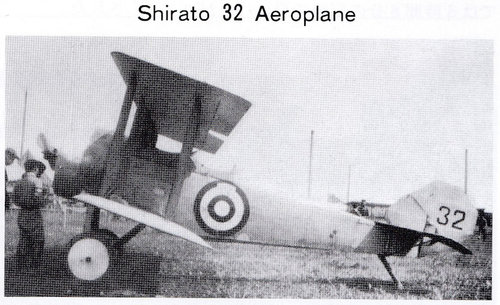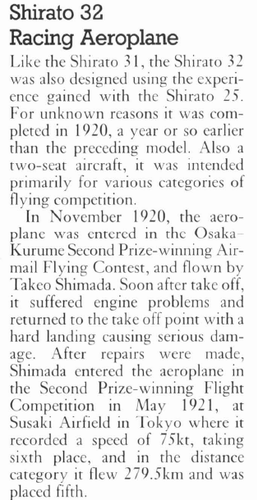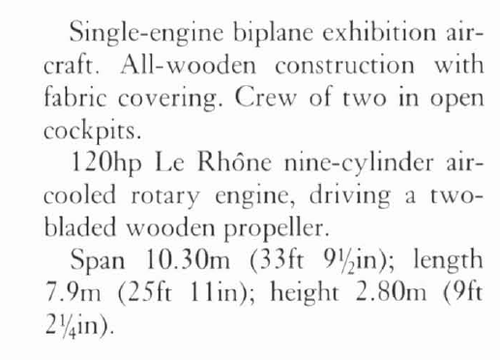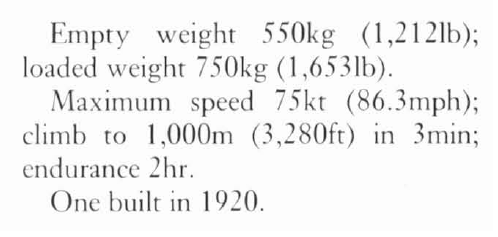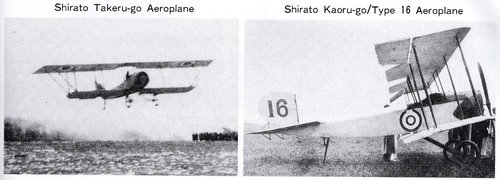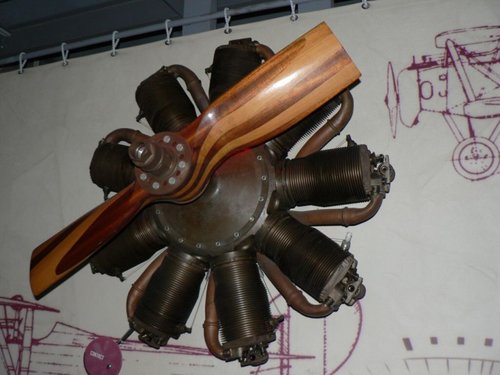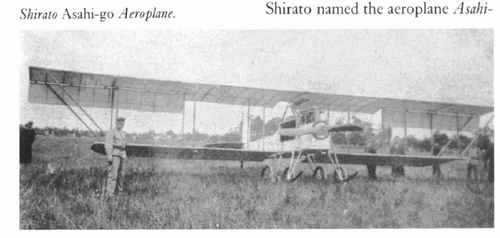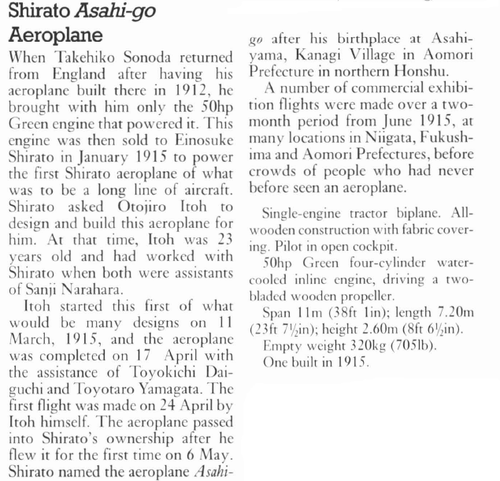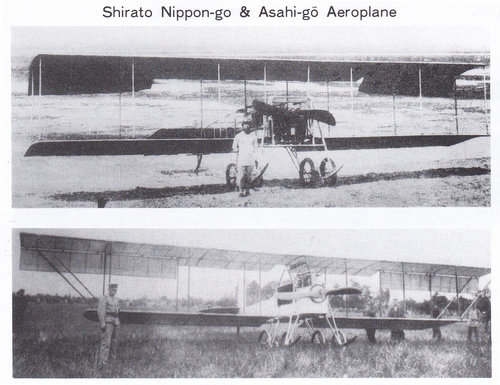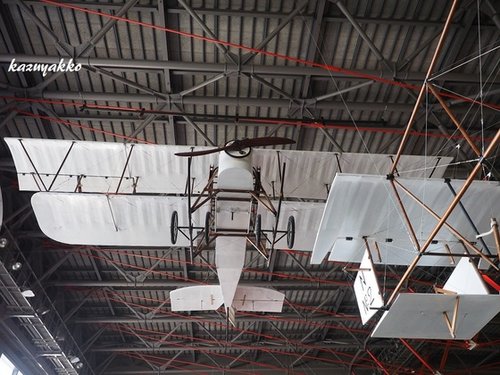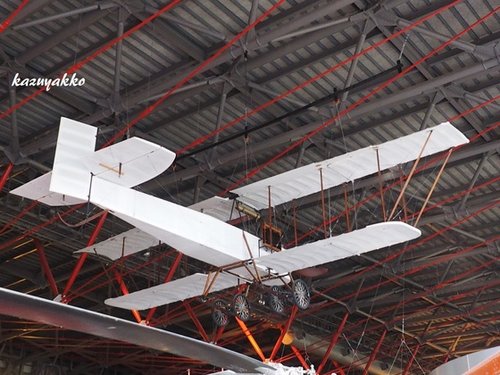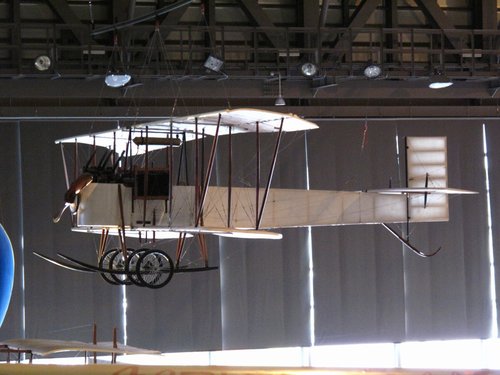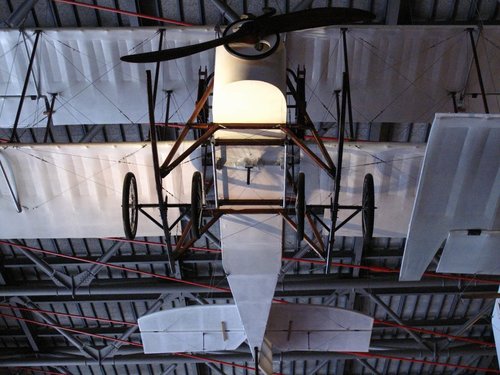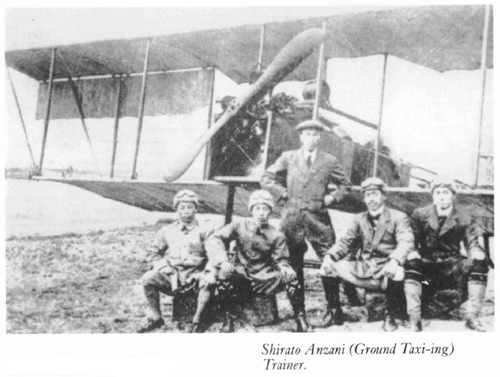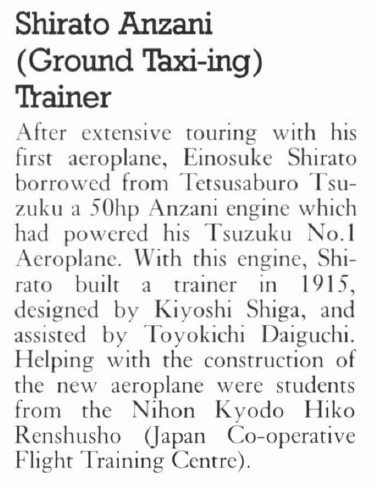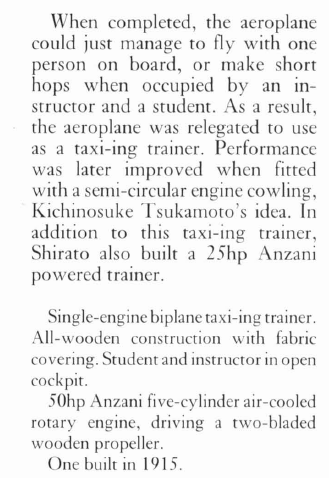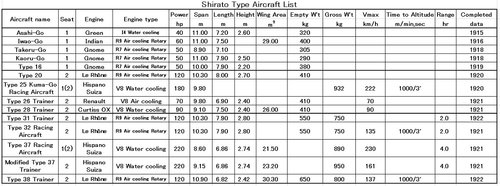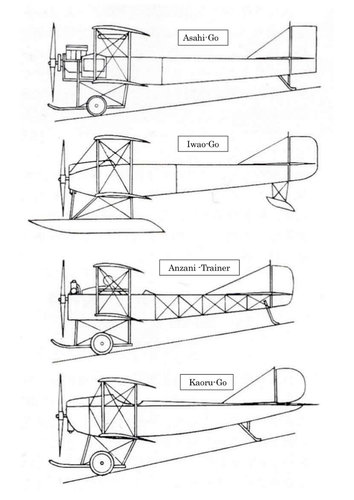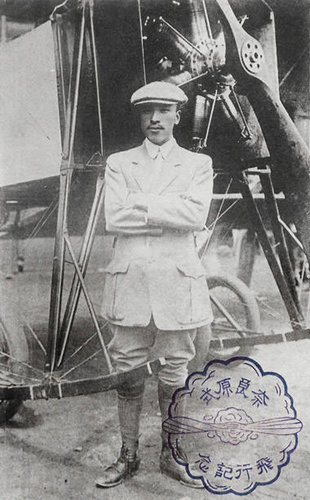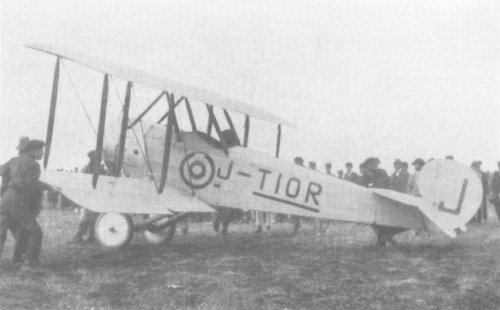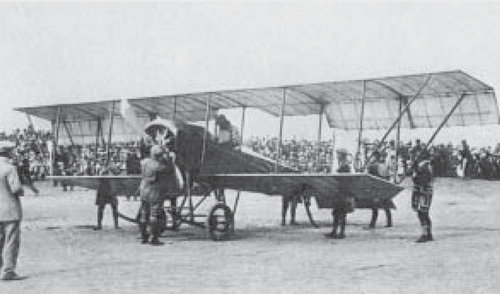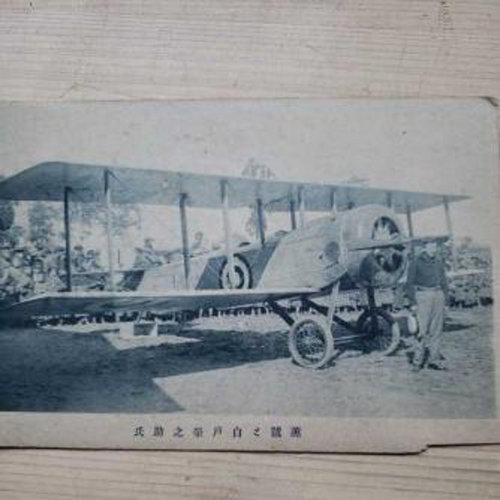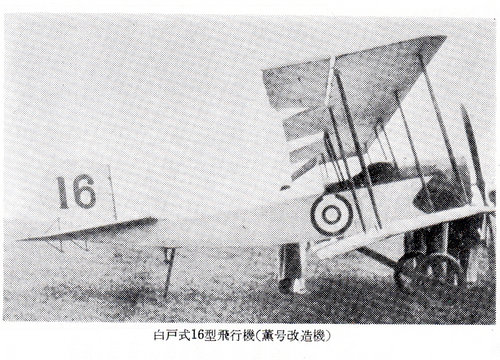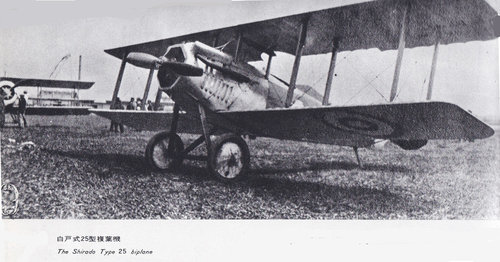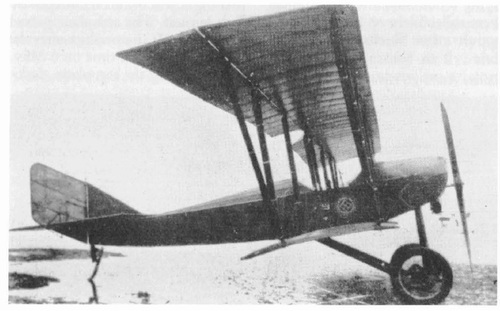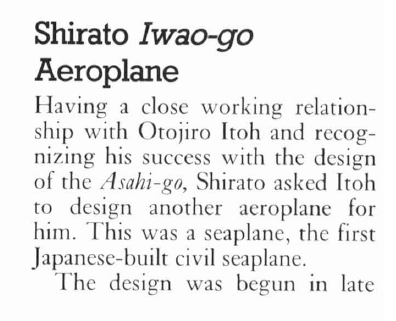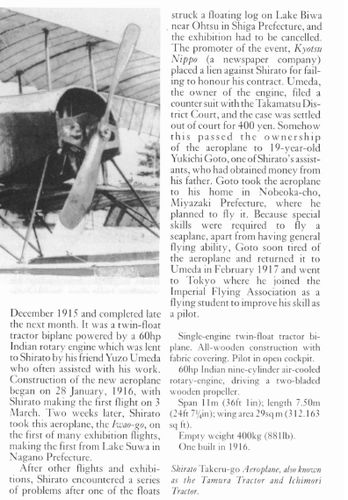You are using an out of date browser. It may not display this or other websites correctly.
You should upgrade or use an alternative browser.
You should upgrade or use an alternative browser.
Shirato Aircraft and Projects
- Thread starter hesham
- Start date
- Joined
- 3 September 2006
- Messages
- 1,405
- Reaction score
- 1,262
blackkite
Don't laugh, don't cry, don't even curse, but.....
- Joined
- 31 May 2007
- Messages
- 8,389
- Reaction score
- 6,302
In 1920, Pilot Shirato purchased the Le Rhône Type 9Jb air-cooled radial rotary 120hp engine, which was released in large numbers from France after World War I, and built three aircraft Shirato Type 20, 31 and 32.
These three aircraft were airplanes designed as standard two-seat trainer that were easy to build. The upper and lower wing were straight shape with the same dimensions, and the major parts were standardized. The rudder was oval and had a counterbalance surface in the front.
Until the time of the Great Kanto Earthquake, these airplanes were used for various purposes such as training, advertising, and sightseeing, and they were practical airplanes during the heyday of Shirato. The Ito-type 20 was an airplane of the same system and was manufactured from 1920 to 1922.
The Shirato Type 32 participated in the second postal flight competition with prizes between Osaka and Kurume, held in November 1920, returned to the aircraft due to an engine failure immediately after takeoff, and failed to land, resulting in damage.
The Shirato type 32, which had its damage repaired, recorded a speed of 38.54m/s in the speed competition of the second flight competition with prizes held in Susaki, Tokyo, and was the sixth result. In the distance competition, type32 recorded 279.5km and was the fifth result.
Shirato type 32
Crew : 2, Span : 10.3m, Length : 7.9m, Empty weight : 500kg, Gross weight : 750kg, Maximum speed : 135km/h, Time to altitude : 1000m/3’, Endurance : 2h
Source : HAND BOOK OF JAPANESE AIRCRAFT 1910~1945, Model Art.
Le Rhône Type 9Jb
http://www.mincbergr.net/index.php?page=le-rhone-9jb-1917
These three aircraft were airplanes designed as standard two-seat trainer that were easy to build. The upper and lower wing were straight shape with the same dimensions, and the major parts were standardized. The rudder was oval and had a counterbalance surface in the front.
Until the time of the Great Kanto Earthquake, these airplanes were used for various purposes such as training, advertising, and sightseeing, and they were practical airplanes during the heyday of Shirato. The Ito-type 20 was an airplane of the same system and was manufactured from 1920 to 1922.
The Shirato Type 32 participated in the second postal flight competition with prizes between Osaka and Kurume, held in November 1920, returned to the aircraft due to an engine failure immediately after takeoff, and failed to land, resulting in damage.
The Shirato type 32, which had its damage repaired, recorded a speed of 38.54m/s in the speed competition of the second flight competition with prizes held in Susaki, Tokyo, and was the sixth result. In the distance competition, type32 recorded 279.5km and was the fifth result.
Shirato type 32
Crew : 2, Span : 10.3m, Length : 7.9m, Empty weight : 500kg, Gross weight : 750kg, Maximum speed : 135km/h, Time to altitude : 1000m/3’, Endurance : 2h
Source : HAND BOOK OF JAPANESE AIRCRAFT 1910~1945, Model Art.
Le Rhône Type 9Jb
http://www.mincbergr.net/index.php?page=le-rhone-9jb-1917
Attachments
Last edited:
- Joined
- 26 May 2006
- Messages
- 33,032
- Reaction score
- 12,613
blackkite
Don't laugh, don't cry, don't even curse, but.....
- Joined
- 31 May 2007
- Messages
- 8,389
- Reaction score
- 6,302
Hi Nippon-Go and Asahi-go.
Takehiko Sonoda made a Sonoda-style airplane in England in 1912 and took a test flight.
He then returned Japan with only the airplane's Green 50hp engine.
Shigesaburo Torikai, who runs the automobile industry, bought the engine and in cooperation with pilot Einosuke Shirato to build the Shirato-type Nippon-Go aircraft.
In 1915, the Nippon-Go held a flight meeting in Iida City, Nagano Prefecture, but was unable to take off, only repeated takeoff run and was damaged. The reason why Nippon-Go couldn't take off was the low air pressure and insufficient wing area in Iida city, which located 500m above sea level.
Due to this failure, it was the Shirato-type Asahi-Go aircraft that expanded the wing area of the Asahi-Go, and it succeeded in paid touring flight.
Source : HAND BOOK OF JAPANESE AIRCRAFT 1910~1945, Model Art.
Takehiko Sonoda made a Sonoda-style airplane in England in 1912 and took a test flight.
He then returned Japan with only the airplane's Green 50hp engine.
Shigesaburo Torikai, who runs the automobile industry, bought the engine and in cooperation with pilot Einosuke Shirato to build the Shirato-type Nippon-Go aircraft.
In 1915, the Nippon-Go held a flight meeting in Iida City, Nagano Prefecture, but was unable to take off, only repeated takeoff run and was damaged. The reason why Nippon-Go couldn't take off was the low air pressure and insufficient wing area in Iida city, which located 500m above sea level.
Due to this failure, it was the Shirato-type Asahi-Go aircraft that expanded the wing area of the Asahi-Go, and it succeeded in paid touring flight.
Source : HAND BOOK OF JAPANESE AIRCRAFT 1910~1945, Model Art.
Attachments
Last edited:
blackkite
Don't laugh, don't cry, don't even curse, but.....
- Joined
- 31 May 2007
- Messages
- 8,389
- Reaction score
- 6,302
Attachments
Last edited:
blackkite
Don't laugh, don't cry, don't even curse, but.....
- Joined
- 31 May 2007
- Messages
- 8,389
- Reaction score
- 6,302
Attachments
blackkite
Don't laugh, don't cry, don't even curse, but.....
- Joined
- 31 May 2007
- Messages
- 8,389
- Reaction score
- 6,302
Misawa Aviation and Science Museum near Misawa Airport.
Misawa Air Base/Air port
https://www.misawa.af.mil/
Misawa base air show in 2019.
Misawa Aviation & Science Museum, Aomori
「大空」と「飛翔」をテーマに、科学する心、感動する心、挑戦する心を育む施設です。「航空」「科学」に関する様々な情報をお知らせします。
www.kokukagaku.jp
Misawa Air Base/Air port
https://www.misawa.af.mil/
Misawa base air show in 2019.
Last edited:
- Joined
- 26 May 2006
- Messages
- 33,032
- Reaction score
- 12,613
blackkite
Don't laugh, don't cry, don't even curse, but.....
- Joined
- 31 May 2007
- Messages
- 8,389
- Reaction score
- 6,302
Einosuke Shirato (November 12, 1885 - March 2, 1936 ) is a pioneer of Japanese aviation.
Born in Kanagi-cho, Kitatsugaru-gun, Aomori Prefecture.
After graduating middle school, he joined the Army Transportation Corps balloon squadron in 1906 ater apprenticeship of joinery, and retired as a sergeant in 1910. He studied under Sanji Narahara with the introduction of Yoshitoshi Tokugawa, who was a senior officer in the military.
In April 1912, at the first paid private flight competition in Japan held at Kawasaki Racecourse, Shirato earned the fame of the first Japanese private pilot by piloting the Narahara-type No. 4 "Ohtori-Go". On the following day, he was a huge success by flying front of Prince Hirohito at Aoyama in Tokyo.
Furthermore, at the end of May, he moved to the airport based on the tidal flats of The Inage Coast, Currently, mihama-ku, Chiba City, and educated Onjiro Ito as an instructor. From October 1912 to November of the following year, the Narahara-type "Ohtori-Go" was conducted in cities across China, Kyushu, Shikoku, Korea, Hokkaido, Tohoku, etc., and the plane was popularized(in this, the mistress of Narahara was put on the "Ohtori-Go" and the first female passenger flight in Japan was carried out..
In January 1917, Shirato joint flight training station was established in Inage Airfield in Narahara. In December 1916, he established a Shirato airplane training station in Samukawa, Chuo-ku, Chiba-cho.
In 1923, he cooperated with the Asahi newspaper 's east-west regular aviation association and sent Kadoshita to the pilot, but they were martyred one after another, so he retired from the aviation industry in October 1924.
Born in Kanagi-cho, Kitatsugaru-gun, Aomori Prefecture.
After graduating middle school, he joined the Army Transportation Corps balloon squadron in 1906 ater apprenticeship of joinery, and retired as a sergeant in 1910. He studied under Sanji Narahara with the introduction of Yoshitoshi Tokugawa, who was a senior officer in the military.
In April 1912, at the first paid private flight competition in Japan held at Kawasaki Racecourse, Shirato earned the fame of the first Japanese private pilot by piloting the Narahara-type No. 4 "Ohtori-Go". On the following day, he was a huge success by flying front of Prince Hirohito at Aoyama in Tokyo.
Furthermore, at the end of May, he moved to the airport based on the tidal flats of The Inage Coast, Currently, mihama-ku, Chiba City, and educated Onjiro Ito as an instructor. From October 1912 to November of the following year, the Narahara-type "Ohtori-Go" was conducted in cities across China, Kyushu, Shikoku, Korea, Hokkaido, Tohoku, etc., and the plane was popularized(in this, the mistress of Narahara was put on the "Ohtori-Go" and the first female passenger flight in Japan was carried out..
In January 1917, Shirato joint flight training station was established in Inage Airfield in Narahara. In December 1916, he established a Shirato airplane training station in Samukawa, Chuo-ku, Chiba-cho.
In 1923, he cooperated with the Asahi newspaper 's east-west regular aviation association and sent Kadoshita to the pilot, but they were martyred one after another, so he retired from the aviation industry in October 1924.
blackkite
Don't laugh, don't cry, don't even curse, but.....
- Joined
- 31 May 2007
- Messages
- 8,389
- Reaction score
- 6,302
blackkite
Don't laugh, don't cry, don't even curse, but.....
- Joined
- 31 May 2007
- Messages
- 8,389
- Reaction score
- 6,302
Hi Maveric-san!! I will check.Are there pictures of the following Shirato types: Kaoru-Go, Type 20 and Type 26?
blackkite
Don't laugh, don't cry, don't even curse, but.....
- Joined
- 31 May 2007
- Messages
- 8,389
- Reaction score
- 6,302
Hi! Engines for Shirato aircraft.
https://starklite.com/indian-motorcycle-tech/indian-motorcycle-company-airplane-engines/
https://airandspace.si.edu/collection-objects/gnome-omega-rotary-7-engine/nasm_A19660001000
https://www.key.aero/forum/historic-aviation/133464-1914-renault-70hp-v-8-engine
http://www.williammaloney.com/Aviat...um/AircraftEngines/pages/03HispanoSuizaV8.htm
https://airandspace.si.edu/collection-objects/curtiss-ox-5-v-8-engine/nasm_A19810723000
https://starklite.com/indian-motorcycle-tech/indian-motorcycle-company-airplane-engines/
https://airandspace.si.edu/collection-objects/gnome-omega-rotary-7-engine/nasm_A19660001000
https://www.key.aero/forum/historic-aviation/133464-1914-renault-70hp-v-8-engine
http://www.williammaloney.com/Aviat...um/AircraftEngines/pages/03HispanoSuizaV8.htm
https://airandspace.si.edu/collection-objects/curtiss-ox-5-v-8-engine/nasm_A19810723000
Attachments
-
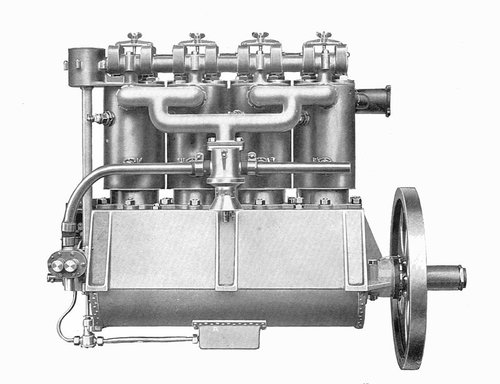 Green D.4 inline 4cylinder water cooling engine.jpg63.7 KB · Views: 13
Green D.4 inline 4cylinder water cooling engine.jpg63.7 KB · Views: 13 -
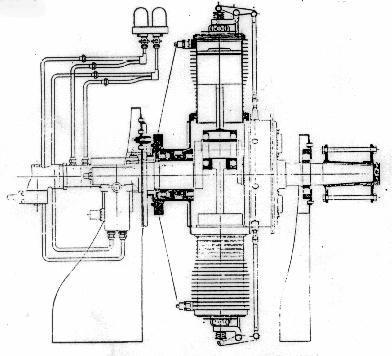 Indian engine.png109.5 KB · Views: 10
Indian engine.png109.5 KB · Views: 10 -
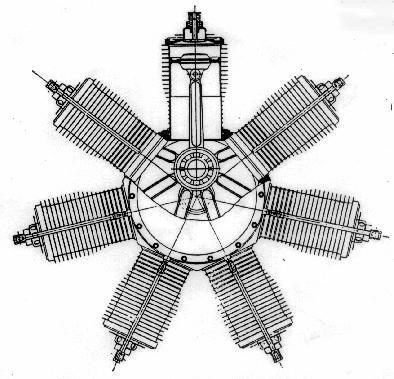 Indian air cooling rotary engine front.png125.1 KB · Views: 9
Indian air cooling rotary engine front.png125.1 KB · Views: 9 -
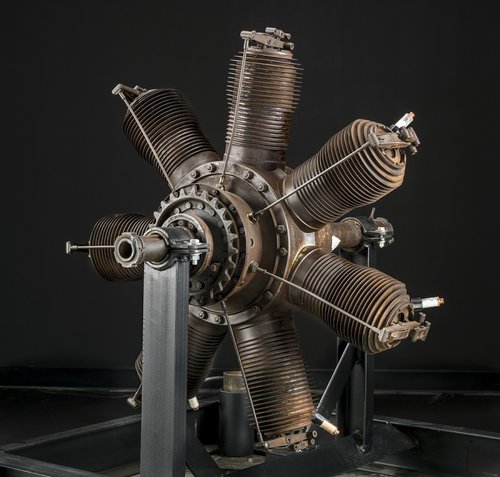 Gnome Omega Rotary 7 Engine.jpg288.1 KB · Views: 8
Gnome Omega Rotary 7 Engine.jpg288.1 KB · Views: 8 -
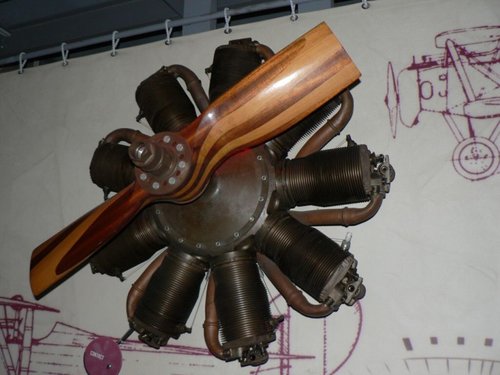 Le-Rhone-1917-9jb-02 air cooling rotary engine.jpg105.2 KB · Views: 7
Le-Rhone-1917-9jb-02 air cooling rotary engine.jpg105.2 KB · Views: 7 -
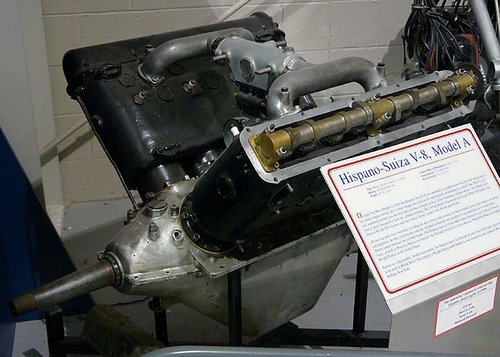 Hispano Suiza water cooling V8.jpg52.1 KB · Views: 8
Hispano Suiza water cooling V8.jpg52.1 KB · Views: 8 -
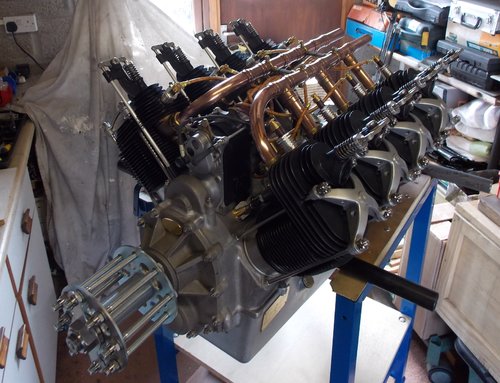 Renault air cooling V8 70hp engine.jpg1.3 MB · Views: 9
Renault air cooling V8 70hp engine.jpg1.3 MB · Views: 9 -
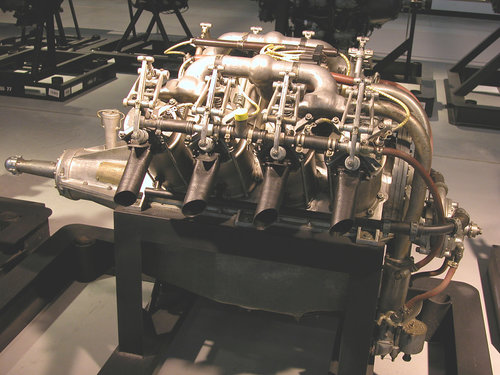 Curtiss OX-5 V8 water cooling engine.jpg378.8 KB · Views: 14
Curtiss OX-5 V8 water cooling engine.jpg378.8 KB · Views: 14
Last edited:
blackkite
Don't laugh, don't cry, don't even curse, but.....
- Joined
- 31 May 2007
- Messages
- 8,389
- Reaction score
- 6,302
Hi! Kaoru-Go. (薫号(號))
Explanation of the third picture(post card) is "薫號と白戸榮之助氏(The Kaoru-Go and Mr. Einosuke Shirato)”.
Later Kaoru-Go became Type 16 to delete skid of the undercarriage, settted large cowl around the engine and shortened the wing.
Explanation of the third picture(post card) is "薫號と白戸榮之助氏(The Kaoru-Go and Mr. Einosuke Shirato)”.
Later Kaoru-Go became Type 16 to delete skid of the undercarriage, settted large cowl around the engine and shortened the wing.
Attachments
Last edited:
blackkite
Don't laugh, don't cry, don't even curse, but.....
- Joined
- 31 May 2007
- Messages
- 8,389
- Reaction score
- 6,302
blackkite
Don't laugh, don't cry, don't even curse, but.....
- Joined
- 31 May 2007
- Messages
- 8,389
- Reaction score
- 6,302
Hi! Shirato type 37 Racing Aircraft.
The Shirato Type 37 racing plane, which was said to be the best masterpiece among Shirato airplanes, was designed by the cooperation of Aijiro Hara and Shuzo Kurahashi. This aircraft had the most streamlined parts of the fuselage and was the most sophisticated and smart of the domestic aircraft at the time.
RAF15 was adopted for the wing profile of the main wing, and the maximum lift coefficient was 1.21 and the maximum lift-to-drag ratio was 26. The aileron was installed only on the upper wing, which has a large area. The engine was a Hispano-Suiza 220hp, and a circular radiator was installed on the front of the nose.
At the postal flight competition between Tokyo and Aomori held in August 1921, this plane flew on the outbound route in 3 hours and 45 minutes, and was considered a candidate for the victory, but on the return route the wings touched the monument and was damaged. At the time of repair, the span of the main wing of the aircraft was increased and increased the number of main wing support.
This modified airplane is the Shirato modified 37, which flew in 4 hours and 6 minutes and won the 4th mail flight competition between Kanazawa and Hiroshima in October 1921.
Before the remodeling, the Type 37 airplane had a maximum speed of 230km/h and was the fastest of the civilian planes in Japan, and was slightly faster than the Japanese Army's Type Hei model 1 fighter(SPADⅩⅢ) and the Japanese Navy's Type 10 carrier fighter.
Source : ENCYCLOPEDIA OF JAPANESE AIRCRAFT VOL.8 KYUSHU CONTENTS.
http://naka929gen.cocolog-nifty.com/blog/2012/07/no43-ad5b.html
http://vintageaviation.michikusa.jp/japanese-civilian-aircraft.html
The Shirato Type 37 racing plane, which was said to be the best masterpiece among Shirato airplanes, was designed by the cooperation of Aijiro Hara and Shuzo Kurahashi. This aircraft had the most streamlined parts of the fuselage and was the most sophisticated and smart of the domestic aircraft at the time.
RAF15 was adopted for the wing profile of the main wing, and the maximum lift coefficient was 1.21 and the maximum lift-to-drag ratio was 26. The aileron was installed only on the upper wing, which has a large area. The engine was a Hispano-Suiza 220hp, and a circular radiator was installed on the front of the nose.
At the postal flight competition between Tokyo and Aomori held in August 1921, this plane flew on the outbound route in 3 hours and 45 minutes, and was considered a candidate for the victory, but on the return route the wings touched the monument and was damaged. At the time of repair, the span of the main wing of the aircraft was increased and increased the number of main wing support.
This modified airplane is the Shirato modified 37, which flew in 4 hours and 6 minutes and won the 4th mail flight competition between Kanazawa and Hiroshima in October 1921.
Before the remodeling, the Type 37 airplane had a maximum speed of 230km/h and was the fastest of the civilian planes in Japan, and was slightly faster than the Japanese Army's Type Hei model 1 fighter(SPADⅩⅢ) and the Japanese Navy's Type 10 carrier fighter.
Source : ENCYCLOPEDIA OF JAPANESE AIRCRAFT VOL.8 KYUSHU CONTENTS.
http://naka929gen.cocolog-nifty.com/blog/2012/07/no43-ad5b.html
http://vintageaviation.michikusa.jp/japanese-civilian-aircraft.html
Attachments
-
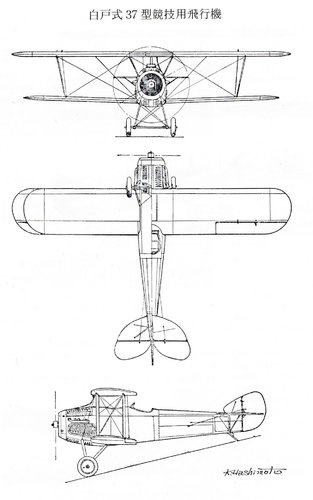 The Shirato 37 racing aircraft.jpg295.6 KB · Views: 24
The Shirato 37 racing aircraft.jpg295.6 KB · Views: 24 -
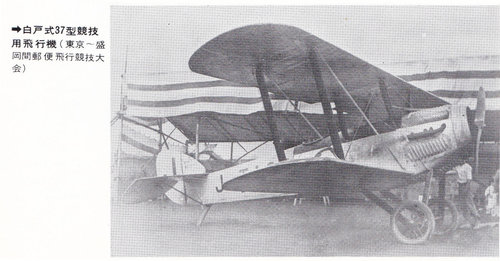 Shirato 37 before modification.jpg332 KB · Views: 23
Shirato 37 before modification.jpg332 KB · Views: 23 -
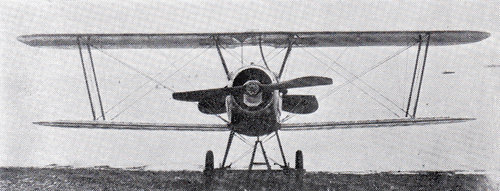 Shirato 37 front view.jpg975.2 KB · Views: 17
Shirato 37 front view.jpg975.2 KB · Views: 17 -
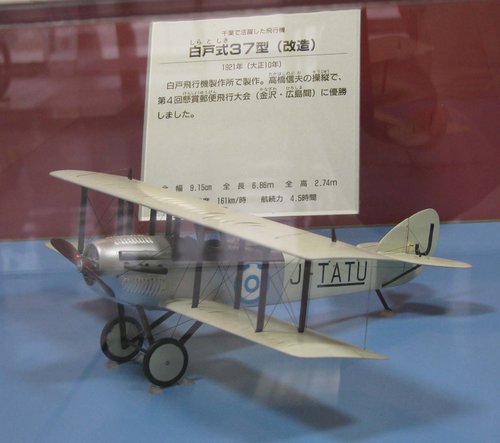 Modified Shirato 37 racing plane exhibition model.jpg99.9 KB · Views: 16
Modified Shirato 37 racing plane exhibition model.jpg99.9 KB · Views: 16 -
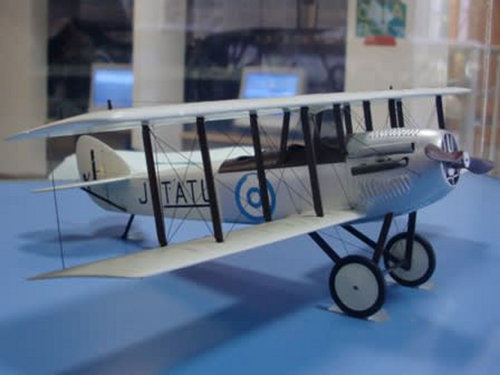 modified type 37 model.jpg78.8 KB · Views: 19
modified type 37 model.jpg78.8 KB · Views: 19 -
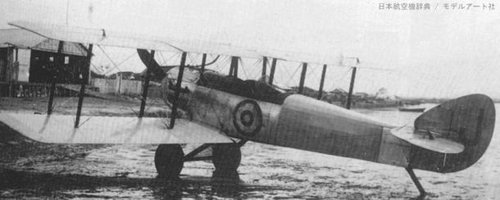 jp_c_shirato-37bis_1921.jpg90.4 KB · Views: 18
jp_c_shirato-37bis_1921.jpg90.4 KB · Views: 18
Last edited:

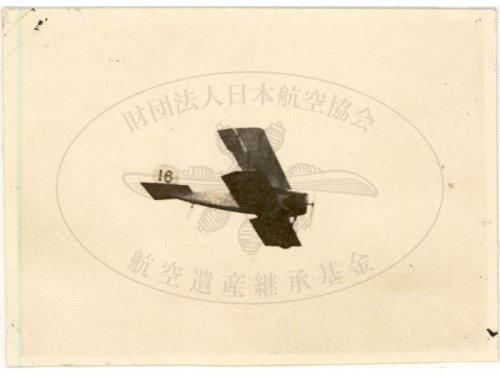
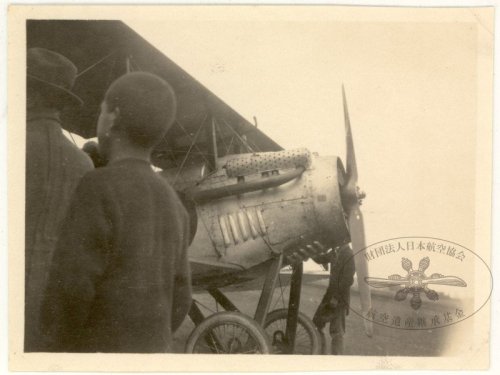
![Shirato 25 [J-TAKL].jpg](/data/attachments/124/124249-a260f719044fad085e33246b8fa027a6.jpg)
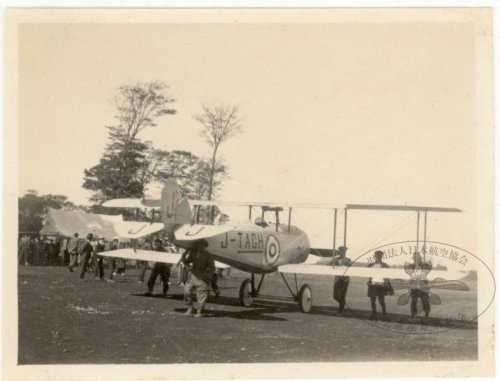
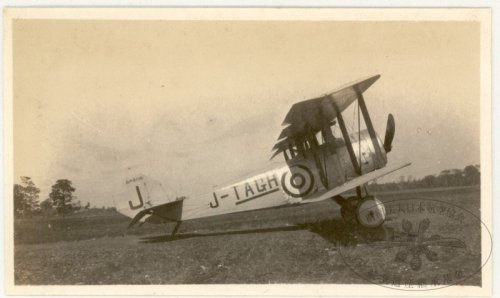
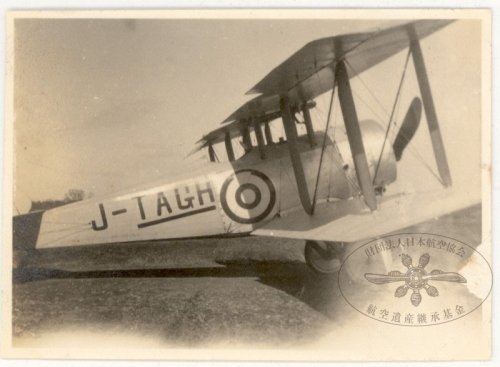
![Shirato 37 [J-TATU].jpg](/data/attachments/124/124253-3aa1ad78514b037215bf86d04bc8be13.jpg)
